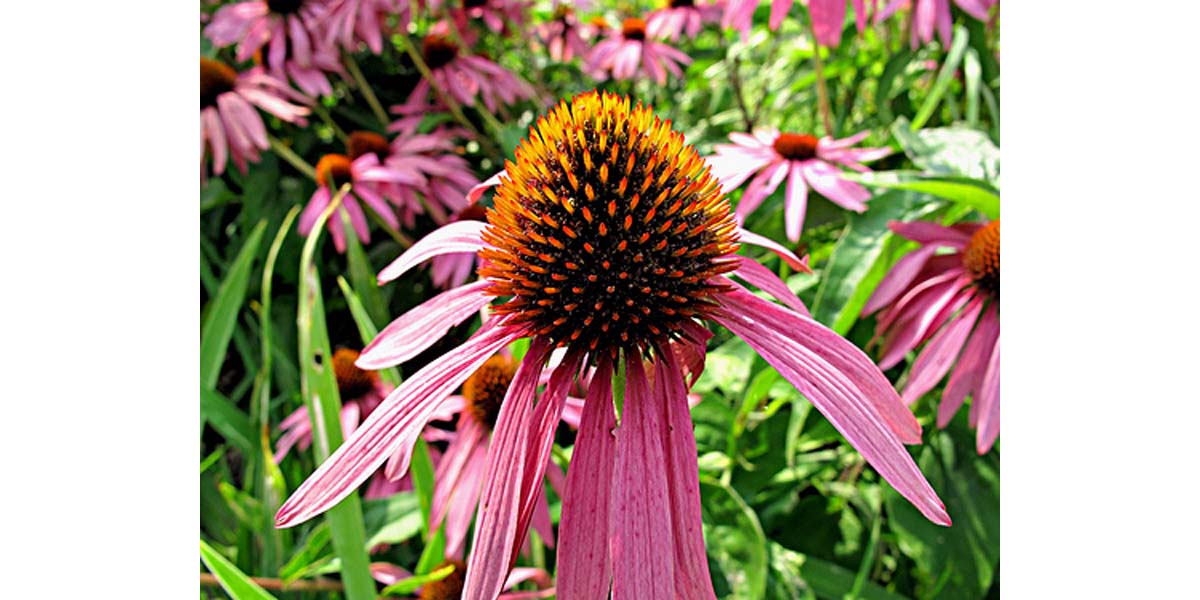Table of Contents
The native American herb echinacea has been a favorite for fighting winter respiratory infections for hundreds of years. Used in teas, tinctures, and capsules, this prairie plant has true believers and fierce defenders. What about science?
This latest study, of course, was not the first test of echinacea for colds, flu, infections, or inflammation. There are over 800 peer-reviewed, published studies of echinacea in the medical literature. Despite over 800 tests, many of them yielding results like those above, and centuries of successful use, one expert opines "Findings of efficacy for echinacea are strictly preliminary." However, other studies have concluded:
- Echinacea purpurea root, in the product Echinaforce, prevented infection with H1N1 in laboratory studies.
-
Echinacea pallida root, in a study at Iowa State University, was found to suppress all markers of inflammation.

- A study at the University of Washington found that echinacea is safe for children aged 2 to 11, although about 10% more children in the echinacea group developed itch-less rashes.
So why are there negative results in some studies? The answer seems to be that there are not enough people in any of the studies to establish statistical significance (and that may be the intended result of the research designs). Sure, echinacea makes people feel better and reduces inflammation, but we can say it's not a statistically significant effect, the researchers tell us. And it also makes a difference which product is used for which purpose.
If you are concerned about H1N1 "swine flu" or an outbreak of bird flu viruses, your best best is to take an Echinacea purpurea root product like Echinaforce. If you are treating a cold in a child, try to give your child an echinacea tea, made by pouring hot water over Echinacea angustifolia, Echinacea pallida, or Echinacea purpurea root, or, even better, a combination of all three kinds of echinacea. Sure, part of the healig effect may be the warmth and moisture from the tea itself, but the idea is to get well! Otherwise, make sure any product given to a child is alcohol-free. To be on the safe side, no one who has an allergy to ragweed or who is on steroid treatment should take this herb.
If you are concerned about H1N1 "swine flu" or an outbreak of bird flu viruses, your best best is to take an Echinacea purpurea root product like Echinaforce. If you are treating a cold in a child, try to give your child an echinacea tea, made by pouring hot water over Echinacea angustifolia, Echinacea pallida, or Echinacea purpurea root, or, even better, a combination of all three kinds of echinacea. Sure, part of the healig effect may be the warmth and moisture from the tea itself, but the idea is to get well! Otherwise, make sure any product given to a child is alcohol-free. To be on the safe side, no one who has an allergy to ragweed or who is on steroid treatment should take this herb.
- Pleschka S, Stein M, Schoop R, Hudson JB. Anti-viral properties and mode of action of standardized Echinacea purpurea extract against highly pathogenic avian influenza virus (H5N1, H7N7) and swine-origin H1N1 (S-OIV). Virol J. 2009 Nov 13,6:197
- Senchina DS, Wu L, Flinn GN, Konopka del N, McCoy JA, Widrlechner MP, Wurtele ES, Kohut ML.Year-and-a-half old, dried Echinacea roots retain cytokine-modulating capabilities in an in vitro human older adult model of influenza vaccination. Planta Med. 2006 Oct, 72(13):1207-15. Epub 2006 Oct 4
- Photo courtesy of Steffen Ramsaier on Flickr: www.flickr.com/photos/steffen_ramsaier/4817272585/
- Photo courtesy of Steve Kocino on Flickr: www.flickr.com/photos/stevekocino/3961086921



Your thoughts on this